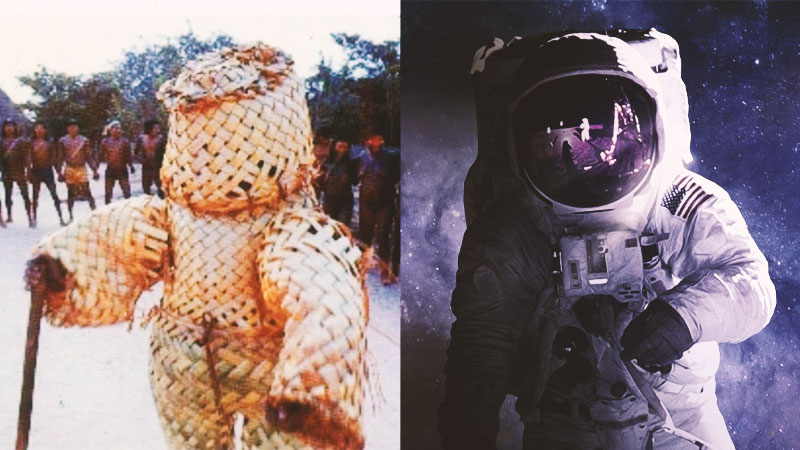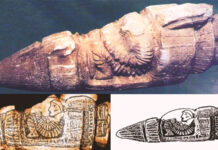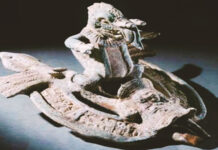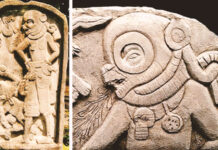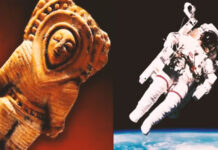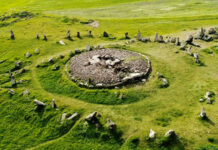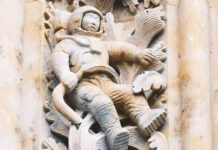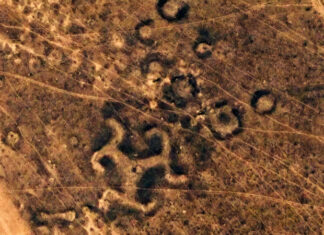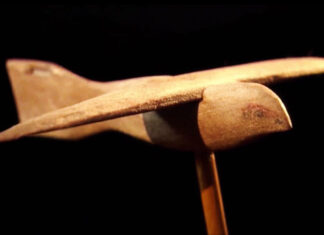Folklore traditions are full of descriptions of extraterrestrial beings and their ships, observed under unusual circumstances and not understood by our ancestors.
The story of Bep-kororoti was told from generation to generation by the indigenous tribes of northern Brazil and suggests an alien contact in a remote past in the Amazon, where an ancient astronaut disembarked from his “flying canoe” and taught the natives great knowledge.
The first publication of the story of Bep-kororoti appeared in the Brazilian magazine “O Cruzeiro”, when the Swiss researcher and author Erich von Daniken came to Brazil to launch his work “Chariots of the Gods”, in 1968. Fascinated by this story, Daniken became interested in filming the astronaut of the Kayapó indigenous tribe.
The Kayapó tribe annually commemorates the arrival of the enigmatic Bep-kororoti, wearing a wicker suit similar to that of a modern astronaut. However, indigenous rituals take place unexpectedly and an appropriate opportunity was lacking. Thus, Daniken transcribed the legend of Bep-kororoti by describing him as a space warrior in his 1972 book “Gods From Outer Space”.
The fantastic story of the Bep-kororoti assumes veracity because it is taught at the tribal school “House of Men”, which the natives call Eng-ób.
The natives tell that Bep-kororoti landed at Tipôtikré waterfall, specifically on a mountain located between the Fresco and Riozinho rivers, tributaries of the Xingu River, in the south of the Brazilian state Pará and would have lived and mixed with their ancestors.

The story is told by Guey-babã, the wise elder of the tribe:
“Our grandparents tell us that the Men-bengôkré (original name of the Kayapó meaning ‘people who came from the water hole’) were nomads and lived by hunting and fishing. One night they were camped at the foot of Sierra Pukatôti, a mountain that caused suspicion and fear because it was always covered with mists and mysterious noises, followed by lightning.
On that occasion, the noise and lightning were caused by a flying object that passed over them and stopped at the top of the mountain. In the morning, the bravest warriors went to check the traces. As they were going up the mountain, a Kuben appeared in the mists, a large foreigner, an invader with a strange physical appearance.
The Kuben had only one eye, without a mouth or nose. He had no hair and was armed with a mighty club that hurled lightning bolts that disintegrated rocks and trees. Whoever tried to grab him received such a shock that he fell unconscious.
While the warriors fought bravely, the invader was indifferent, knowing that no one could with him. When they realized that, despite being strong and powerful, the adversary did not want to kill them, they gave up the fight and fled.
Sometimes, the Kuben was seen on the mountain trails, undisturbed by the warriors, who preferred to ignore its presence.
One afternoon, some young people went to bathe in a lake and saw another invader. However, unlike the mountain giant, this one was handsome, fair-skinned, tall, slender and strong, and was in the bath completely naked. The stranger also spotted the Men-bengôkré, but seemed indifferent to their presence, acting naturally.
The warriors went to look at him closely and tried to talk to him. The foreigner then said that his name was Bep-kororoti, who had come from the sky and had been attacked by them on the mountain. Young people were surprised and said, ‘No, we attacked a monster’.
The space traveler showed the protective clothing he had taken off to shower, which was lying on the floor. The young people were overjoyed at the discovery and took the stranger to the camp.
Little by little, the villagers were attracted to the stranger because of his good looks, the brilliant whiteness of his skin, and his kindness to everyone.”
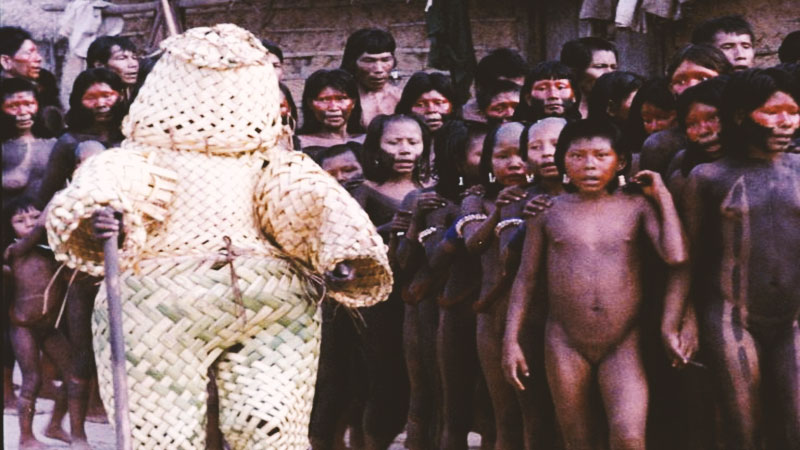
Bep-kororoti is described as being cheerful and smart, he taught the natives to build a circular village and a square with the tribal school, which functioned as a center for activities with chants, dances and handicrafts to improve the Djudé (bow), the Kruá (arrow) and Kô (indigenous cylindrical and elongated weapon of attack and defense). The Kóp, the club used by the natives for attack and defense, was copied from the powerful triangular sword that Bep-kororoti carried.
Furthermore, the mysterious visitor organized the leadership in the tribe, instructing that the village chief, called Benadiôro, needed to be considerate of his people and determined that the village’s Council of Elders would have to help the chief make decisions, and so the Kayapó people established their operating bases.
The story also tells that Bep-kororoti married and had children among the natives.
Over time, Bep-kororoti’s behavior changed, and he spent more time with his daughter, named Niôpoti, near the Sierra Pukatôti.
One day, during a hunt, he argued with his companions and disappeared into the bush. For some reason, he covered his family in black paint and left them in a shelter. Then, he donned his costume, called Bô, and armed with his Kóp, the club that shot blinding and disintegrating rays, he challenged the tribe.
The Men-bengôkré thought he had gone mad and sought to subdue him by force. However, as the natives had already realized when the visitor arrived on the mountain, he was invincible.
Bep-kororoti climbed the Sierra Pukatôti and, moments later, thunder and lightning were heard and his “flying canoe” went up into the sky, shrouded in smoke and lightning, until disappearing into the clouds.
Niôpoti, his daughter who was married and pregnant, stayed in the village while the rest of Bep-kororoti’s family disappeared along with him.
“Bep-Kororoti disappeared into thin air amid clouds of fire, smoke and thunder. The ground was shaken by the explosion in such a way that the roots of the plants jumped out, and the forest disappeared, and the tribe began to feel hungry”, says the sage Guey-babã.
After the departure of Bep-kororoti, the region was ravaged by climate change, the people were in great need and diseases killed many people.
It was then that Niôpoti told her husband that she could help to solve the problems, but they would both have to go up the Sierra Pukatôti to get help. As the mountain was forbidden, Niôpoti had a hard time convincing her husband, and when they finally reached the top, she covered herself and her son with black paint. Then she sat down in a kind of canoe and asked her husband to wait for her to return. That done, it provoked a kind of explosion and the object on which she was sitting flew and disappeared among the clouds.
Days later, another “flying canoe” descended from the sky bringing Niôpoti, her son, her brother and her mother. They all brought medicine, food and seeds, but after delivering them, they returned to outer space and disappeared.
In response to Bep-kororoti’s recommendations, Niôpoti took the people to live in Sierra Pukatôti. On top of the sacred mountain, they found what they called Men-baban-kent-kré, the “stone houses made by the Gods”, and the group went on to inhabit such houses for many and many generations.
This is the story of Bep-kororoti, the Kuben who arrived in a “flying canoe” and changed the lives of the Kayapó.

